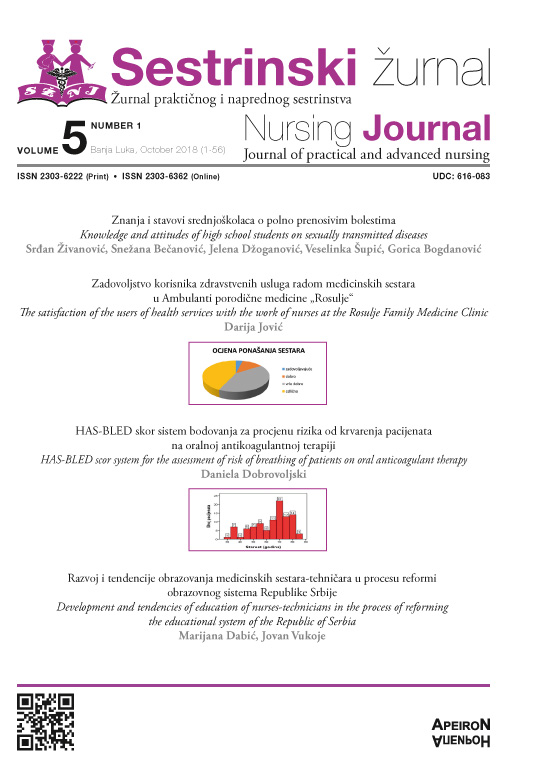Nursing interventions in the treatment of syndrome Takotsubo // Zadaci kardiološke medicinske sestre u lečenju Takotsubo sindroma
DOI:
https://doi.org/10.7251/SEZ0118045OAbstract
Takostube syndrome (TS; broken heart syndrome) is described as transient reversible cardiomyopathy that occurs in older women in most cases as a result of mental or psychological suffering. It is associated with various disorders and it is defined as Takotsubo Syndrome (TS). The clinical picture is similar to acute coronary syndrome, but it must differ from acute ischemic heart disease. Ethiopathological factors have not been fully clarified, but the main role in the development of TS by catecholamine-induced spiking myocardial capillaries or the direct toxicity of catecholamines themselves.
There are no strict guidelines in the implementation of health care for patients with TS. Given the great similarity in the clinical picture between acute myocardial infarction and TS, the same procedures and tasks are used in practice as in patients with acute myocardial infarction with ST elevation, while coronarography does not prove to be the opposite. The patient under suspicion of diagnosis of TS is admitted to the coronary unit.
Healthcare goals for the treatment of patients with TS are identical to those in acute coronary syndrome and include: pain relief, tension reduction - anxiety, preservation of myocardial function, and prevention and treatment of complications.

